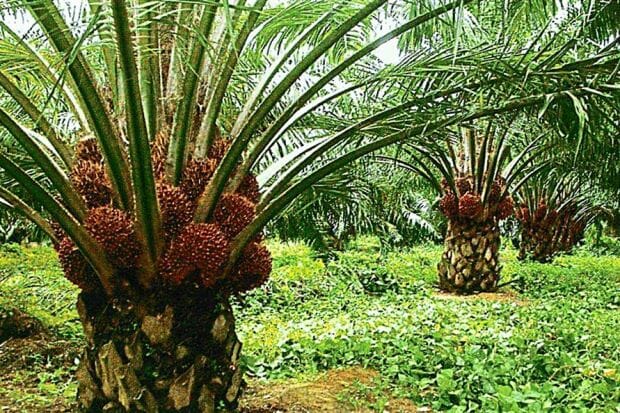The Department of Statistics Malaysia (DOSM) released the Selected Agricultural Indicators 2023 which revealed that Malaysia’s agriculture sector increased by 0.1 per cent in 2022 as compared to negative 0.1 per cent in the previous year. The increase was attributed by the oil palm commodity sector which recorded a growth of positive 3.8 per cent (2021: -5.6%).”
Palm oil contributed RM36.1 billion or 36.5 per cent. This was followed by other agriculture crops (RM28.1 billion; 28.3%) and livestock (RM16.5 billion; 16.7%).
Chief Statistician of Malaysia, Dato’ Sri Dr. Mohd Uzir Mahidin, said, “Malaysia recorded a Gross Domestic Product (GDP) of RM1,510.9 billion in 2022, an increase of 8.7 per cent as compared to RM1,390.6 billion in 2021. As for contribution of the agriculture sector to GDP among ASEAN countries ranged between 0.03 to 21.9 per cent. Cambodia recorded the highest percentage share to GDP with 21.9 per cent. This was followed by Myanmar (20.3%) and Lao PDR (14.6%).
“On the other hand, Singapore recorded the lowest percentage share to GDP with 0.03 per cent. Malaysia was ranked seventh out of ten ASEAN countries.”
On agriculture production, Dr. Mohd Uzir said: “The production of major commodity crops in 2022 continued to decrease as compared to 2021, except for fresh fruit bunches (oil palm) and pepper. The production of fresh fruit bunches (oil palm) was the highest among agricultural commodity which recorded 94,814.5 thousand tonnes, increased 3,420.8 thousand tonnes or 3.7 per cent as compared to the previous year.”
The production of vegetables in Malaysia showed an increase of 7.0 per cent in 2022 with Pahang remained as the highest producer with a contribution of 39.2 per cent, followed by Johor (21.1%) and Kelantan (11.9%). In the same period, fruit production also increased by 8.4 per cent. Johor was the highest producer of fruit in Malaysia with a contribution of 42.2 per cent, followed by Pahang (14.9%) and Sarawak (8.1%).
Looking at the livestock subsector, production of mutton, chicken/ duck eggs, and fresh milk recorded an increase of 16.9, 3.5 and 0.6 per cent, respectively. In contrast, pork, duck meat, chicken meat, and beef decreased by 7.9, 2.6, 2.5 and 2.4 per cent, respectively.
Landings of marine fish in 2022 was 1,308.4 thousand tonnes, decreased by 1.5 per cent as compared to 1,328.0 thousand tonnes in 2021. Meanwhile, the production of brackish water and freshwater aquaculture increased by 47.1 and 9.4 per cent respectively as compared to the previous year.
Dr. Uzir Mahidin added, “The number of employed persons in 2022 amounted to 15,391.7 thousand persons (2021: 15,064.2 thousand persons). Out of the total, 1,540.8 thousand persons (10.0%) were involved in the agriculture sector. This number showed a decrease over the previous year (2021:1,550.0 thousand persons; 10.3%). The employed persons in the agriculture sector was still dominated by citizen with 67.5 per cent while the rest are non-citizens.”
Data of salaries and wages released by the DOSM showed that the number of recipients of salaries and wages for skilled agricultural, forestry, livestock and fisheries workers in 2022 were 86.6 thousand persons. The median monthly salaries and wages received for this skilled worker was RM1,764 with male workers at RM1,779 and females at RM1,531.
Meanwhile, the mean monthly salaries and wages received was RM2,011 with male workers at RM2,033 and females RM1,831. Labour productivity for the agriculture sector declined by 1.2 per cent for the period from 2021 to 2022.
Dr. Mohd Uzir Mahidin said that the agriculture sector is crucial in ensuring the country’s food supply remains sufficient. Additionally, the agriculture sector plays a vital role in the national economy through its contribution to the country’s income and export earnings.
Malaysia’s trade has shown positive developments, as the country’s exports of agrofood and selected agricultural product increased from RM154.5 billion in 2021 to RM188.6 billion in 2022.
At the same time, the imports of agrofood and selected agricultural product also increased to RM144.4 billion in 2022, as compared to RM120.5 billion in 2021.
However, when looking at Malaysia’s cumulative food imports in overall for over a five years period (2018-2022) amounted RM296.4 billion, increased by 31.8 per cent as compared to the previous five years (2013-2017: RM224.9 billion).









